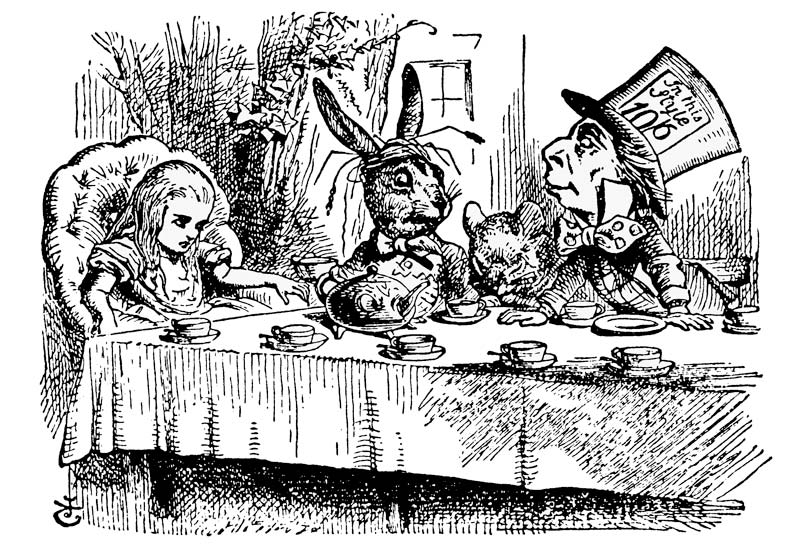
“Then you should say what you mean,” the March Hare went on.
“I do,” Alice hastily replied; “at least-at least I mean what I say-that’s the same thing, you know.”
“Not the same thing a bit!” said the Hatter. “Why, you might just as well say that ‘I see what I eat’ is the same thing as ‘I eat what I see’!”
“You might just as well say,” added the March Hare, “that ‘I like what I get’ is the same thing as ‘I get what I like’!”
“You might just as well say,” added the Dormouse, which seemed to be talking in its sleep, “that ‘I breathe when I sleep’ is the same thing as ‘I sleep when I breathe’!”
― Lewis Carroll, Alice in Wonderland
When I was early in my career and teaching algebra to 9th and 10th graders, I saw that they often wrote things I did not understand. Here’s one example:
-10 + -10 = 20
I asked my students where they came up with the idea that a negative plus a negative equals a positive and they told me their teacher told them “a negative and a negative equals a positive.” Notice that a literal word for word translation of what the student said into algebraic symbols is equivalent to the generalization above. Students listened to their teacher, learned the idea the teacher presented and applied that idea appropriately. The problem is that the idea is a shortcut for a more verbose and more precise mathematical statement.
This issue can happen at any time during a student’s time in school. A teacher might notice that a student, in the early stages of learning subtraction, has written that 2 – 7 = 5. At this point, the teacher might say, “Make sure you put the larger number first because when we subtract, we always take-away the smaller number from the larger number.” Later on, when students are learning about negative numbers, this early learning on subtraction can be sticky, and make understanding why 2 – 7 = -5 more challenging.
A critical idea in mathematics is that how we define mathematical objects has consequences for what the properties of the defined objects are. For example, there is a debate between whether trapezoids should be defined as quadrilaterals with at least one set of parallel lines or exactly one set of parallel lines. The first definition means that parallelograms, with two sets of parallel lines, would be trapezoids. The second definition means that trapezoids are distinct objects from parallelograms. Exploring the consequences of different definitions is critical work in mathematics but this work should be done collectively where possible so that definitions can be refined and concepts clarified.
When we use simplified language in order to help students understand a concept, students will often do this mathematical work on their own, so if we want students to understand the boundaries of the mathematical ideas and not over-generalize, we need to be careful that the language we use is precise and that say what we mean, and not more. It is also critical that we regularly check how students actually understand ideas, not how we think they understand them.